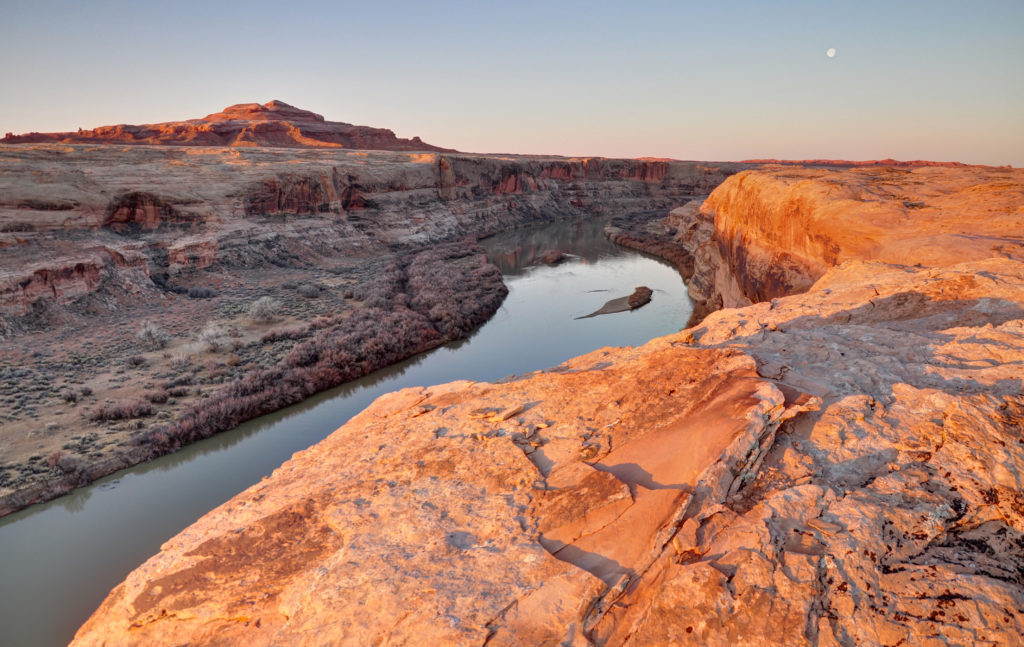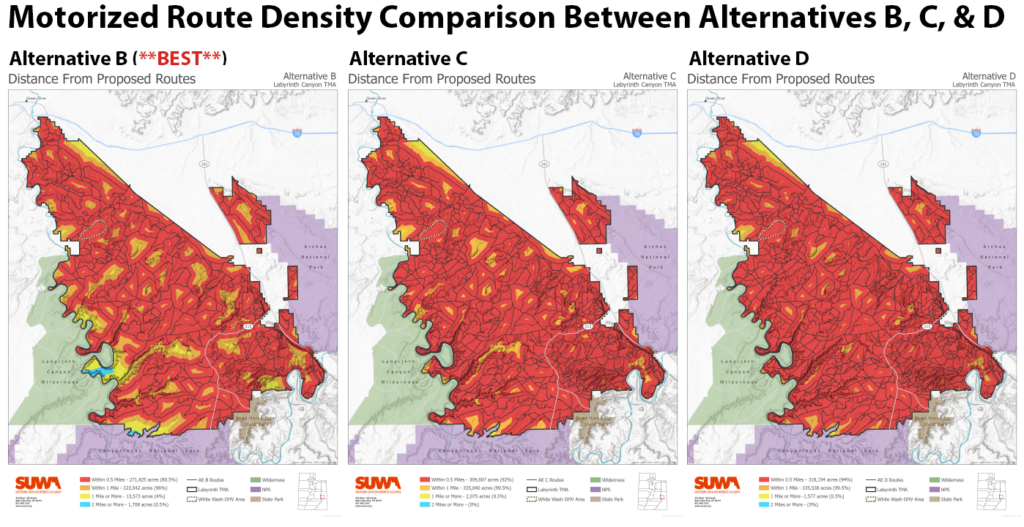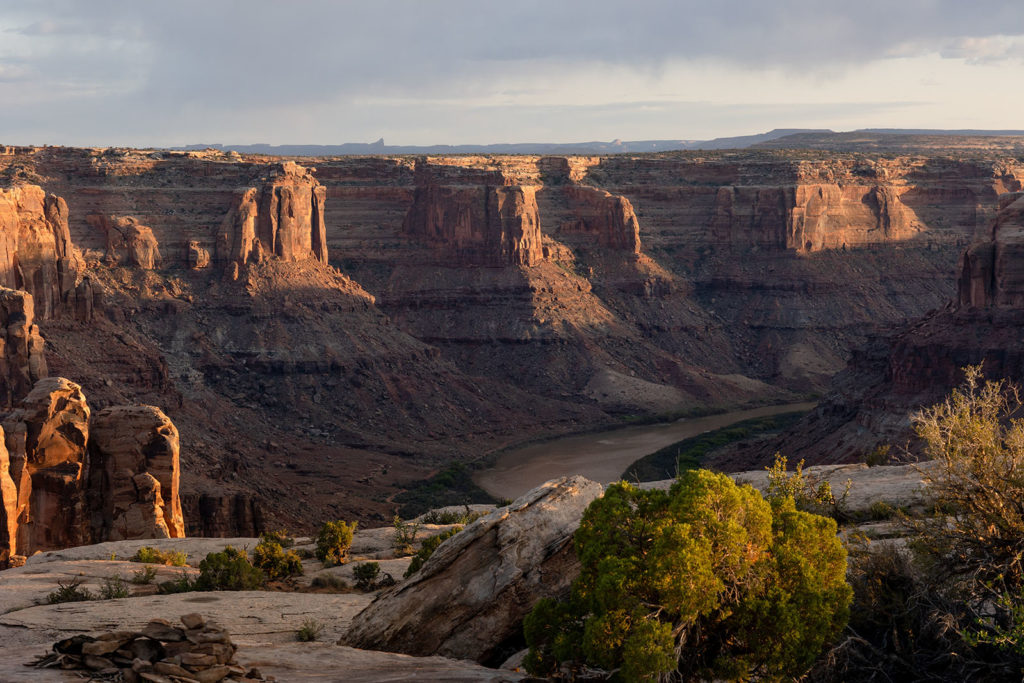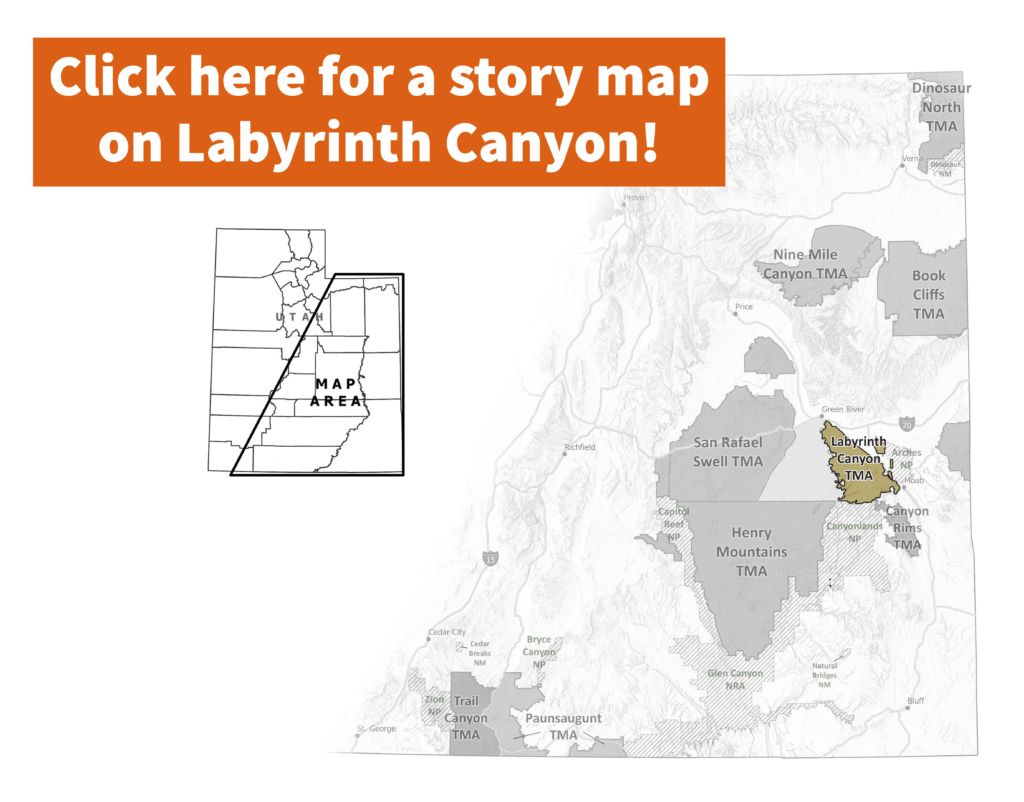Take Action: Save Labyrinth Canyon!
The Bureau of Land Management (BLM) is accepting comments on a draft travel management plan for the iconic Labyrinth Canyon area outside of Moab—a plan that will determine where off-road vehicle (ORV) use is allowed in this remarkable landscape for decades to come. The comment deadline has been extended to October 21st. Click here to sign the petition calling on the BLM to protect Labyrinth Canyon!
Home to unmatched quiet recreational opportunities, as well as irreplaceable cultural and historic resources and important wildlife habitat, the Labyrinth Canyon region is a crown jewel of Utah’s backcountry. It encompasses the internationally-recognized Labyrinth Canyon stretch of the Green River, as well as its many side canyons including Mineral, Hell Roaring, Spring, and Ten Mile Canyons.
Labyrinth Canyon itself is a gem of the America West, where more than 40 miles of the placid Green River flow through towering canyons. This sublime stretch of river provides a multi-day flatwater wilderness experience that is suitable for families and boaters of all experience levels.
The west side of Labyrinth Canyon was designated as wilderness by Congress in 2019, and the river corridor is designated as a Scenic River under the federal Wild and Scenic Rivers Act. The east side of the Canyon is not yet designated wilderness. The BLM now has the opportunity to protect all of Labyrinth Canyon from ORVs that threaten cultural sites, riparian habitat, wilderness values, and the experience of recreationists seeking a quiet multi-day float.

Unfortunately, the BLM’s draft travel plan continues to resist protecting the Canyon, despite calls from local elected officials and businesses, and Americans from across the country, to protect this Crown Jewel of Utah’s backcountry.
The BLM has released four alternatives for the future of Labyrinth Canyon and Gemini Bridges. It is vital that the BLM hear overwhelming public support for Alternative B. Alternative B would finally protect the entire Labyrinth Canyon river corridor while reducing route density in spectacular areas like Gold Bar Rim, Deadman Point, Day Canyon, and Ten Mile Point.

Show your support for protecting wildlife, cultural values, and solitude in Labyrinth Canyon by adding your name to the petition and we’ll send to the BLM in the form of a joint public comment:
“I’m writing to urge the BLM to prioritize wilderness protection and quiet recreation in its new travel plan for the Labyrinth Canyon-Gemini Bridges Area.
“In the new travel plan, the BLM must preserve the wilderness values of Labyrinth Canyon, and ensure consistent protection on both sides of the Green River.
“The BLM must select Alternative B, the only alternative that provides some balance to the Labyrinth Canyon area by protecting the river corridor, cultural sites and wildlife habitat and removing excessive motorized vehicle routes. The BLM should close the motorized vehicle routes that most significantly impact the canyon, including Hey Joe Canyon and Hell Roaring ORV routes, and Dead Cow and the Tubes motorcycle routes.
“Additionally, the BLM must minimize user conflicts in the Labyrinth Canyon area by offering an escape from motorized recreation for people seeking quiet recreation by closing routes that can be seen or heard from the Canyon corridor.
“Thank you for your consideration.”
The Labyrinth Canyon Travel Management Plan is one of 11 new ORV travel management plans that the BLM is required to complete by 2025. Click here for more information and an overview of the travel management planning process.



